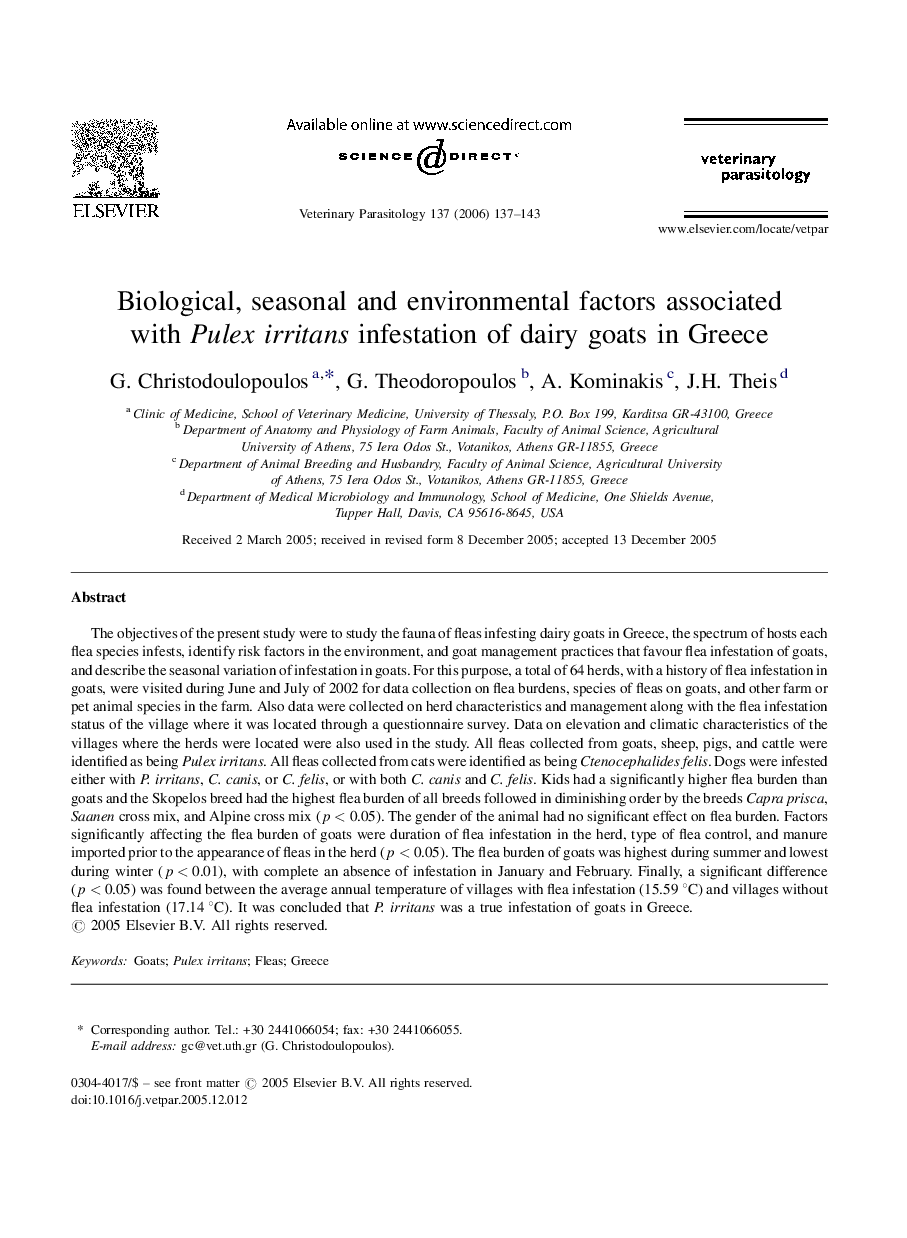| کد مقاله | کد نشریه | سال انتشار | مقاله انگلیسی | نسخه تمام متن |
|---|---|---|---|---|
| 2472652 | 1555798 | 2006 | 7 صفحه PDF | دانلود رایگان |

The objectives of the present study were to study the fauna of fleas infesting dairy goats in Greece, the spectrum of hosts each flea species infests, identify risk factors in the environment, and goat management practices that favour flea infestation of goats, and describe the seasonal variation of infestation in goats. For this purpose, a total of 64 herds, with a history of flea infestation in goats, were visited during June and July of 2002 for data collection on flea burdens, species of fleas on goats, and other farm or pet animal species in the farm. Also data were collected on herd characteristics and management along with the flea infestation status of the village where it was located through a questionnaire survey. Data on elevation and climatic characteristics of the villages where the herds were located were also used in the study. All fleas collected from goats, sheep, pigs, and cattle were identified as being Pulex irritans. All fleas collected from cats were identified as being Ctenocephalides felis. Dogs were infested either with P. irritans, C. canis, or C. felis, or with both C. canis and C. felis. Kids had a significantly higher flea burden than goats and the Skopelos breed had the highest flea burden of all breeds followed in diminishing order by the breeds Capra prisca, Saanen cross mix, and Alpine cross mix (p < 0.05). The gender of the animal had no significant effect on flea burden. Factors significantly affecting the flea burden of goats were duration of flea infestation in the herd, type of flea control, and manure imported prior to the appearance of fleas in the herd (p < 0.05). The flea burden of goats was highest during summer and lowest during winter (p < 0.01), with complete an absence of infestation in January and February. Finally, a significant difference (p < 0.05) was found between the average annual temperature of villages with flea infestation (15.59 °C) and villages without flea infestation (17.14 °C). It was concluded that P. irritans was a true infestation of goats in Greece.
Journal: Veterinary Parasitology - Volume 137, Issues 1–2, 15 April 2006, Pages 137–143